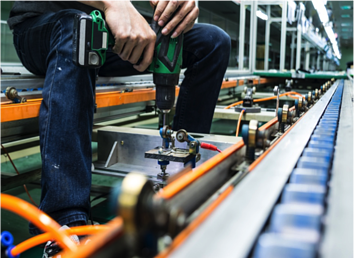by Alexis Devenin, PMP
 Not all jobs can be done remotely. This is the case of plant maintenance activities. Maintenance managers have the responsibility to reduce the infection risks of maintenance workers during work. In addition to implementing the sanitary measures widely promoted by health experts, managers must reflect on Maintenance Strategy in order to accomplish reliability and operational continuity.
Not all jobs can be done remotely. This is the case of plant maintenance activities. Maintenance managers have the responsibility to reduce the infection risks of maintenance workers during work. In addition to implementing the sanitary measures widely promoted by health experts, managers must reflect on Maintenance Strategy in order to accomplish reliability and operational continuity.
The world is in “pause” or slow motion. Hence, there is an opportunity to reflect and improve the way things are done. In Maintenance Strategy, a rationalization of work must be done to minimize workers’ risk exposition. To do that, think in the following actions:
-
Review the frequency and criticality of maintenance work. Maintenance plans consider a lot of inspection and preventive change activities. The frequency of these activities has been set a long time ago, and no one has reviewed or updated these frequencies according to equipment behavior. This is not because of laziness, but rather because maintenance is usually a dizzying activity that doesn’t get the attention for a deep analysis. The slow rhythm of productive activities as a consequence of the pandemic is an opportunity to check the frequencies and content of the existing maintenance plans. Maintenance may be able to be done less frequently without a significant increase in risk of failure or equipment deterioration, and unnecessary interventions could be eliminated.
-
Favor predictive maintenance over preventive maintenance. Preventive maintenance often considers changes that are not necessarily related to an imminent failure. In fact, many failures are not related to wear or time in use. A lot of unnecessary works can be eliminated by switching to predictive maintenance instead of preventive maintenance. Predictive technologies like vibration analysis, thermography, oil analysis, nondestructive examination, etc. allow for diagnosis of equipment condition, and allows maintenance work to be honed in to where it is necessary.
-
Increase the effort in planning activities. The duration of many maintenance activities can be extended due to a lack of good planning. It is necessary to increase detailed planning to avoid delays related to lack of materials, tools, permits, and coordination. Planning can help ensure that workers will be in the plant for just the required amount of time, minimizing their exposure to others during the pandemic. .
-
Check the required critical spare parts stock. Supply chains are strongly affected due to the pandemic, and delivery times are very uncertain. For this reason, it’s important to reflect on the availability of critical spare parts in order to avoid additional troubles in maintenance of machines with unexpected failures.
-
Finally, make an effort to maintain a good work environment. Social distancing has affected the way we communicate. As maintenance is a stressful activity and in which, at times, relationships become very tense, it is essential to ensure good communication and team spirit.
About the Author
Alexis Devenin is a Mechanical Engineer with his MBA and PMP certification. He is an Engineering Project Manager with 20 years of experience in the Steel, Mining and Renewable Energy industries. Connect with Alexis on LinkedIn.
